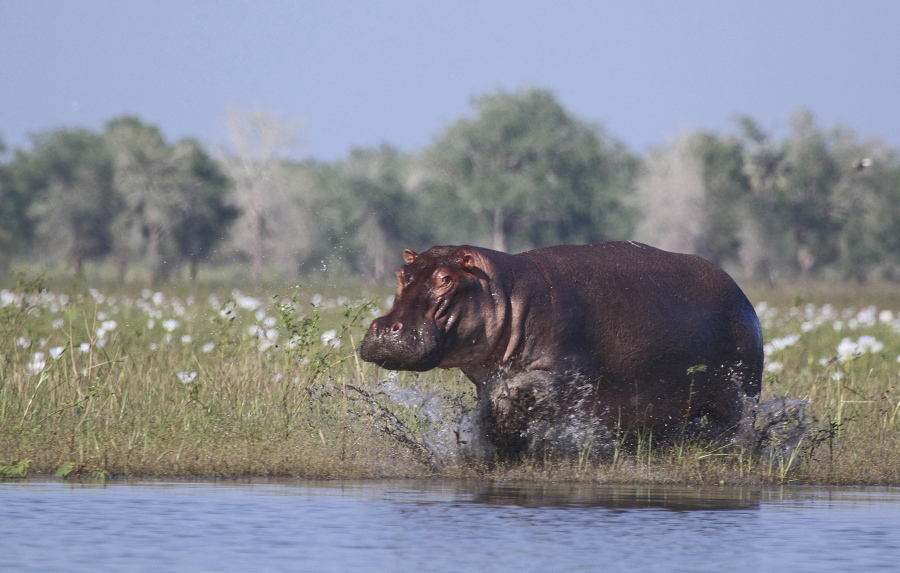WASHINGTON — War is hell for wildlife, too. A new study finds that wartime is the biggest threat to Africa’s elephants, rhinos, hippos and other large animals.
The researchers analyzed how decades of conflict in Africa have affected populations of large animals. More than 70 percent of Africa’s protected wildlife areas fell inside a war zone at some point since 1946, many of them repeatedly, they found. The more often the war, the steeper the drop in the mammal population, said Yale University ecologist Josh Daskin, lead author of a study in Wednesday’s journal Nature.
“It takes very little conflict, as much as one conflict in about 20 years, for the average wildlife population to be declining,” Daskin said.
The areas with the most frequent battles — not necessarily the bloodiest — lose 35 percent of their mammal populations each year there’s fighting, he said.
Although some animals are killed in the crossfire or by land mines, war primarily changes social and economic conditions in a way that make it tough on animals, said study co-author Rob Pringle, an ecologist at Princeton University.
People in and near war zones are poorer and hungrier. So they poach more often for valuable tusks or hunt protected animals to eat, Pringle said. Conservation programs don’t have much money, power or even the ability to protect animals during wartime, Pringle said.
Most of the time, some animals do survive wars. Researchers found animal populations completely wiped out only in six instances — including a large group of giraffes in a Ugandan park between 1983 and 1995 during two civil wars.
Other studies have looked at individual war zones and found animal populations that shrink and others that grow. For example, the demilitarized zone between North and South Korea is great for wildlife because it has “acted almost as a de facto park for almost seven decades,” Daskin said.
The new study covered the entire continent over 65 years. The researchers looked at 10 different factors that could change population numbers, including war, drought, animal size, protected areas and human population density.
The number of wars had the biggest effect on population while the intensity of the wars — measured in human deaths — had the least.
By looking at the big picture, the research supports what many experts figured, that “war is a major driver of wildlife population declines across Africa,” said Kaitlyn Gaynor, an ecology researcher on war and wildlife at the University of California, Berkeley. She was not part of the study.
Greg Carr, an American philanthropist and head of a nonprofit group working in and around Mozambique’s Gorongosa National Park, said the findings are not surprising. The park’s wildlife populations plunged during the country’s civil war, but Carr attributes it more to poverty than war.
“With or without war, poverty is the threat to wildlife in Africa going forward,” Carr said in an email.
Gorongosa is an example of how bad war is for wildlife, but also how quickly animals can recover, the researchers said.
The civil war that ended in 1992 decimated the area with both rebel and government soldiers hunting “their way through the wildlife in the park,” Daskin said. Species came close to “blinking out,” but not quite. Now wildlife is back to 80 percent of prewar levels, Daskin said.
“The effect of war on wildlife is bad,” Pringle said. “But it’s not apocalyptic.”




